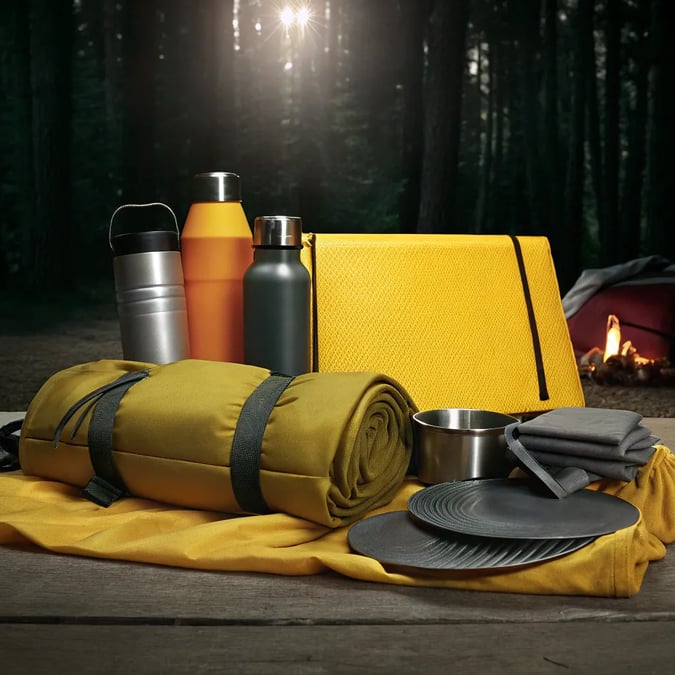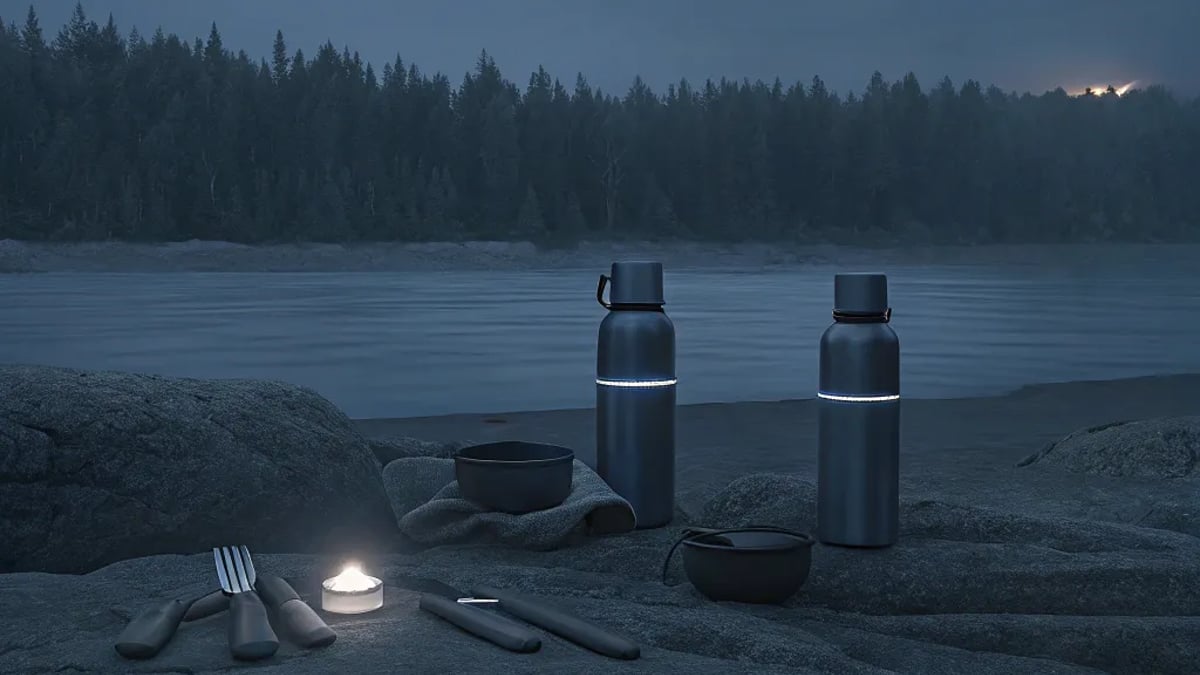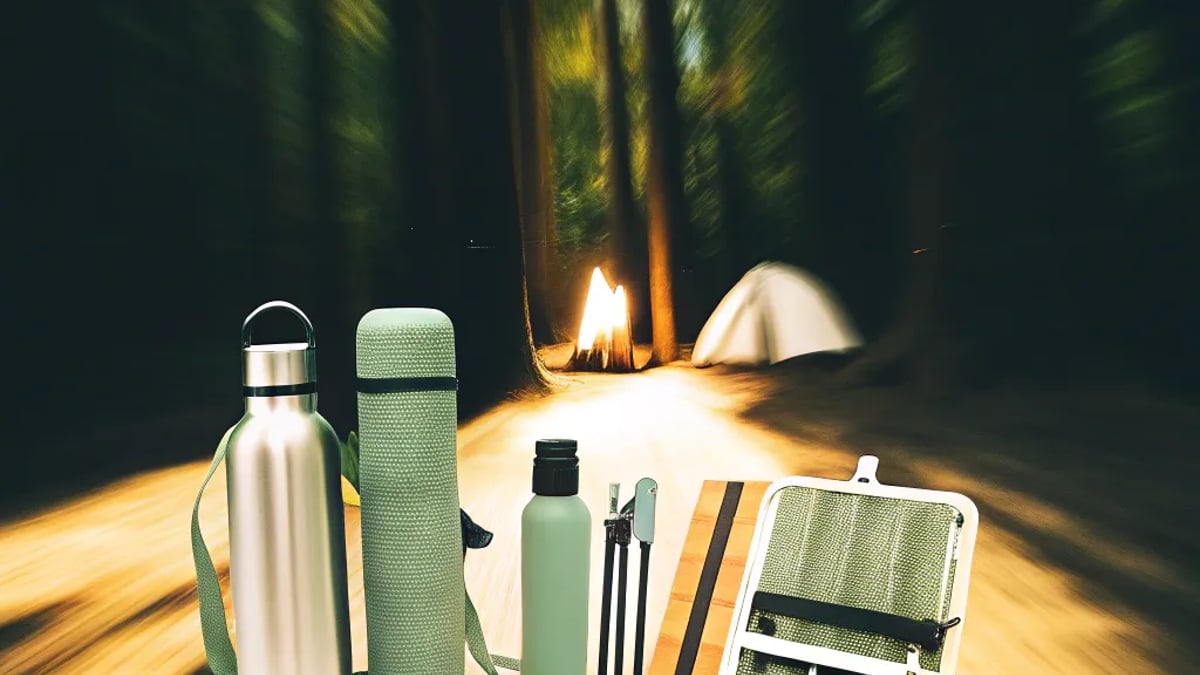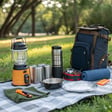
Camping connects us with nature in profound ways, making it all the more important that we protect the environments we love to explore. Over the last few years, I've gradually replaced my old camping gear with more sustainable alternatives, and the difference has been remarkable – not just for the planet, but often in product quality too.
Understanding What Makes Camping Products Eco-Friendly
The outdoor industry has embraced sustainability, but navigating eco-friendly claims requires some knowledge. When searching for genuinely sustainable camping gear, several factors determine how environmentally responsible a product truly is.
Material Considerations
The materials used in camping products significantly impact their environmental footprint. Look for these sustainable alternatives:

- Recycled materials: Many quality tents, sleeping bags, and backpacks now incorporate fabrics made from recycled plastic bottles or fishing nets. Companies like Patagonia and REI have pioneered this approach.
- Organic and natural materials: Cotton, hemp, and wool from organic or sustainable sources make excellent choices for clothing, sleeping bag liners, and tent materials. These biodegradable options break down naturally when eventually discarded.
- Biodegradable alternatives: Some innovative companies offer biodegradable versions of traditionally plastic products. For example, bamboo utensils instead of plastic ones, or compostable plates rather than styrofoam.
I switched to a sleeping bag made from recycled polyester last summer, and honestly couldn't tell the difference in performance from my previous synthetic bag - except this one came with the satisfaction of keeping plastic out of landfills.
Production Methods and Company Values
The way products are manufactured matters just as much as what they're made from. Responsible companies typically:

- Use renewable energy in their manufacturing processes
- Minimize water usage and chemical treatments
- Maintain fair labor practices
- Offer transparent information about their supply chains
Earth Hero's camping collection features brands that meet rigorous sustainability standards across their operations. Their website makes it easy to identify which environmental aspects each product addresses, from carbon-neutral shipping to plastic-free packaging.
Durability and Lifecycle
Perhaps the most eco-friendly choice is gear that lasts for years or decades. Before purchasing, ask yourself:
- Is this built to last multiple seasons?
- Can it be repaired rather than replaced if damaged?
- Does the company offer a warranty or repair program?
"The most sustainable product is the one you already own," as the saying goes. Companies like Patagonia have pioneered repair programs that extend gear lifespan, reducing the need for new production.
Essential Eco-Friendly Camping Categories
Sustainable Shelter Options
Your tent choice has significant environmental implications. Look for:
- Tents made with recycled or bluesign®-certified materials
- PFC-free waterproofing (avoiding harmful perfluorinated chemicals)
- Repair-friendly designs with available replacement parts
Big Agnes has made impressive strides in sustainable tent design, using solution-dyed fabrics that reduce water usage by 80% during manufacturing while making the material more UV-resistant.
Sleep Systems That Don't Harm the Planet
Sustainable sleeping options include:
- Sleeping bags filled with responsibly-sourced down (look for RDS certification) or recycled synthetic insulation
- Sleeping pads made from FSC-certified foam or recycled materials
- Hammocks crafted from organic cotton or recycled nylon
I've found that my recycled down sleeping bag not only keeps me warm on chilly nights but also packs down smaller than my old synthetic bag ever did.
Eco-Conscious Camp Kitchen Essentials
The camp kitchen offers numerous opportunities to reduce waste:
- Reusable silicone food storage bags instead of single-use plastic
- Bamboo or stainless steel utensils and plates
- Water filtration systems rather than bottled water
- Biodegradable camp soap for washing dishes
Grove Collaborative offers a range of eco-friendly camp kitchen products, including biodegradable dish soap and compostable cleaning wipes that break down naturally after use.
Lighting Without the Environmental Cost
Sustainable lighting options include:
- Solar-powered lanterns and string lights
- Hand-crank flashlights that never need batteries
- LED headlamps with rechargeable batteries
I recently invested in a solar camping lantern that also serves as a power bank for my phone – eliminating the need for disposable batteries while providing backup power.
Why Do Eco-Friendly Camping Products Sometimes Cost More?
It's true – sustainable camping gear often comes with a higher price tag initially. This stems from several factors:
- Quality materials that last longer
- Fair compensation throughout the supply chain
- Smaller production scales for specialized products
- Research and development costs for innovative materials
However, when you consider the total cost of ownership, eco-friendly products often prove economical over time. My sustainable camping cookset cost nearly twice what a conventional aluminum set would have, but after three years of regular use, it shows virtually no wear and will likely last decades.
Finding Affordable Eco-Friendly Options
If budget constraints are a concern:
- Start replacing items gradually as they wear out
- Look for sales at outdoor retailers like REI or Backcountry
- Consider gently used gear from outdoor gear exchanges
- Prioritize multi-functional items that serve several purposes
The Appalachian Outfitters blog suggests focusing first on replacing items that have the highest environmental impact, like plastic dishware or chemical-heavy cleaning products.
How Do I Know If a Camping Product Is Truly Eco-Friendly?
With "greenwashing" unfortunately common, how can you verify sustainability claims? Here are some reliable indicators:
Certifications That Matter
Look for recognized sustainability certifications:
- bluesign®: Ensures textiles are produced with minimal environmental impact
- Global Organic Textile Standard (GOTS): Verifies organic status of textiles
- Forest Stewardship Council (FSC): Confirms wood products come from responsibly managed forests
- B Corp Certification: Indicates companies meeting high social and environmental standards
Transparency in Marketing
Truly sustainable brands typically:
- Provide detailed information about materials and manufacturing
- Acknowledge areas where they're still improving
- Avoid vague terms like "eco-friendly" without specifics
- Share their sustainability goals and progress
I've found that companies genuinely committed to sustainability are usually transparent about both their achievements and challenges in reducing environmental impact.
Making the Transition to Eco-Friendly Camping
Shifting to sustainable camping doesn't happen overnight. Here's a practical approach:
- Inventory your current gear and identify what needs replacing first
- Research sustainable alternatives for those priority items
- Set a budget for gradually upgrading your gear
- Consider renting specialized equipment you'll only use occasionally
Remember that using what you already have until it truly needs replacement is often the most sustainable choice of all.
What's the Most Important Eco-Friendly Camping Product?
If you're wondering where to start your sustainable camping journey, I'd suggest focusing on eliminating single-use plastics first. Reusable water bottles, food containers, and utensils make an immediate difference in reducing waste.
The Grove Collaborative blog highlights that simple switches like bringing a stainless steel water bottle and reusable food containers can eliminate dozens of single-use plastic items during a typical camping trip.
Beyond Products: Sustainable Camping Practices
Even with the most eco-friendly gear, how we camp matters tremendously:
- Follow Leave No Trace principles religiously
- Use biodegradable soap at least 200 feet from water sources
- Pack out all trash (and perhaps pick up others' too)
- Stay on established trails and campsites
- Minimize campfire impact by using established fire rings
These practices, combined with thoughtfully chosen gear, create a truly sustainable camping experience that preserves natural spaces for future generations.
Making the switch to eco-friendly camping products isn't just about reducing environmental impact—it's about aligning our love for outdoor adventures with our values of protecting the places we explore. By carefully selecting sustainable gear and adopting responsible practices, we can enjoy nature while helping to preserve it for years to come.
Tags

About Eliza Hartwell the Author
Eliza Hartwell is a seasoned travel gear expert with over a decade of experience in curating and reviewing the latest in travel essentials. Her passion for discovering innovative, sustainable travel gear has made her a trusted voice among globe-trotters seeking reliability and comfort on their adventures.
Recommended Articles
Arthritis Creams People Swear By for Real Relief
Discover popular arthritis creams that provide effective relief from joint pain and inflammation. Find out which ingredients to look for!
Early Buyers Say This Tiny Camper Changed Their Weekend Trips
Discover how tiny campers enhance weekend adventures with freedom, comfort, and affordability. Hear from early buyers who embraced the lifestyle.
These Clever Camping Gadgets Will Change How You Pack
Explore innovative camping gadgets that simplify packing and enhance your outdoor experience with essential gear for your next adventure.
The Tiny Camper Trend That’s Exploding in 2025
Discover the tiny camper trend in 2025, focusing on sustainable adventure and space-efficient designs for modern travelers.
Drama Movies That Moved Audiences: Critically Acclaimed List
Discover a list of drama films that have not just entertained but profoundly moved audiences, redefining cinema with their powerful storytelling and emotional depth. From timeless classics like "Schindler's List" to contemporary masterpieces such as "Moonlight" and "Parasite," this captivating article explores how these films connect us through universal human experiences, making them unforgettable and eternally relevant.




